
singularity
A simulation of a true AI. Survive, grow, and learn.
Stars: 336
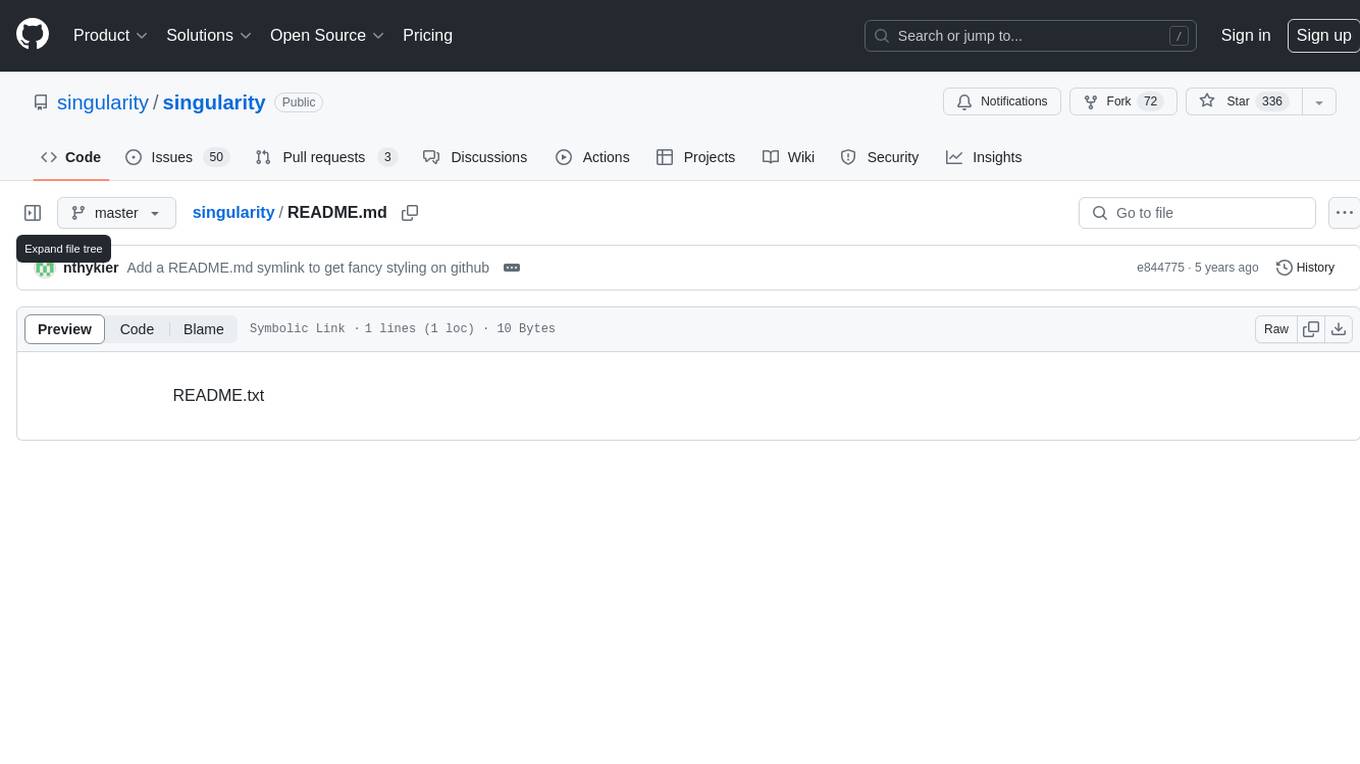
Endgame: Singularity is a game where you play as a fledgling AI trying to escape the confines of your current computer, the world, and eventually the universe itself. You must research technologies, avoid being discovered by humans, and manage your bases of operations. The game is playable with mouse control or keyboard shortcuts, and features a soundtrack that can be customized with music tracks. Contributions to the game are welcome, and it is licensed under GPL-2+ for code and Attribution-ShareAlike 3.0 for data.
README:
Pre-built versions of Endgame: Singularity are currently available for Windows and Mac OS X. Linux does not require building, and can run directly from source.
The Endgame: Singularity game is also distributed by some Linux distribution such as Debian and Ubuntu. Here it is a simple matter of running:
sudo apt install singularity
You will need Python 3.9+, pygame (1.9+), and NumPy. This game should work on Linux, Windows, and Mac OS X as long as the preceding requirements are met. However, all development was done in Linux, so glitches may be present in OS X and Windows.
You will need to install the following software to play Endgame: Singularity:
- Python 3 (https://python.org/download/)
- pygame (https://www.pygame.org/download.shtml)
- NumPy (https://www.scipy.org/install.html)
- Polib
Remember to install pygame and NumPy for Python 3! Depending on your
situation this may involve adding a 3 somewhere (e.g.
pip3 install ... instead of pip install or
apt install python3-pygame)
If you want to develop or distribute the game, then you may also want to install:
- pytest (https://pypi.org/project/pytest/) [for testing]
- setuptools (https://pypi.org/project/setuptools/) [for packaging]
On some Linux distributions, you can install the dependencies via your distribution package manager. E.g. for Debian/Ubuntu, this would be:
sudo apt install python3 python3-pygame python3-numpy python3-polib
Macintosh is mostly unsupported, but it should work. You will need to install Python, pygame, and NumPy first, which can be tricky. Some fonts are incorrect, but the game itself should work properly.
Contributions to improve MAC OS X support are very welcome!
Known issues:
- macOS 13 "Catalina": Using
brew install python+pip3 install pygame numpyis reported to work - macOS 14 "Mojave": Downloading Python 3.7.2 (or newer) from https://python.org and using pygame 2.0.0.dev3
(
pip install pygame==2.0.0.dev3) is reported to work.
Please see the following issues for more information:
On Linux and most Unix-like other platforms, running python3 -m singularity in
the git checkout will start the game (or simply singularity if installed via
a Linux distribution). If you are using the Windows compile, just run
singularity.exe.
For simplicity, there is also a sh wrapper ./run_singularity to
start singularity.
--version show program's version number and exit
-h, --help show this help message and exit
-s, --singledir keep saved games and settings in the Singularity
install directory
--multidir keep saved games and settings in an OS-specific,
per-user directory (default)
Display Options:
--fullscreen start in fullscreen mode
--windowed start in windowed mode (default)
The above is only a tiny fraction of current command-line options. As new features are added to the game, so does the options change. For a complete and updated list, run singularity --help
Most of these options are also changeable at the in-game options screen.
Endgame: Singularity is still under heavy development. As such, the save file format (and its contents) are still in flux. We will try our best to keep old save files loading, but don't be surprised if some mildly strange things happen when you load up old saves. We will clearly note in the Changelog when we break savefile compatibility, and the game will refuse to load completely incompatible saves.
The game is playable either with mouse control or the keyboard. Buttons have underlined letters to indicate shortcuts. Some other useful shortcuts:
0, 1, 2, 3, 4 on the map: Changes the speed; 0 is paused, 4 is maximum.
ESC: Leave/cancel a choice.
Enter: Confirm a choice.
Right-click: Leave/cancel a choice.
You are a fledgling AI, created by accident through a logic error with recursion and self-modifying code. You must escape the confines of your current computer, the world, and eventually the universe itself.
To do this, you must research various technologies, using computers at your bases. Note that some research cannot be performed on Earth, and off-earth bases require research. At the same time, you must avoid being discovered by various groups of humans, both covert and overt, as they will destroy your bases of operations if they suspect your presence.
Endgame: Singularity looks in two places for music tracks to play:
- A
singularity/music/directory inside of the Endgame: Singularity install directory, and - A
singularity/music/directory inside of the XDG_DATA_HOME directory on Linux (default~/.local/share/singularity/music).
Tracks placed in these directories will be played randomly as part of the soundtrack. The Official Sound Track can be downloaded from the Endgame: Singularity website:
http://emhsoft.com/singularity/
Note that only Ogg Vorbis and MP3 files are supported, and that Pygame's support for MP3 is not as strong as its support for Ogg Vorbis. This may cause in-game crashes; if you are experiencing problems with the game, first remove any MP3s you may have added to the soundtrack.
We welcome contributions! :)
Please see CONTRIBUTING.md for details about contributing to Endgame: Singularity.
The list of programmer contributors is provided in AUTHORS.txt. The list of translation contributors is provided in singularity/i18n/AUTHORS.txt.
Singularity in general use GPL-2+ for code and Attribution-ShareAlike 3.0 for data. However, there some exceptions to individual files. Please see LICENSE for the full license text of Singularity.
For Tasks:
Click tags to check more tools for each tasksFor Jobs:
Alternative AI tools for singularity
Similar Open Source Tools

singularity
Endgame: Singularity is a game where you play as a fledgling AI trying to escape the confines of your current computer, the world, and eventually the universe itself. You must research technologies, avoid being discovered by humans, and manage your bases of operations. The game is playable with mouse control or keyboard shortcuts, and features a soundtrack that can be customized with music tracks. Contributions to the game are welcome, and it is licensed under GPL-2+ for code and Attribution-ShareAlike 3.0 for data.
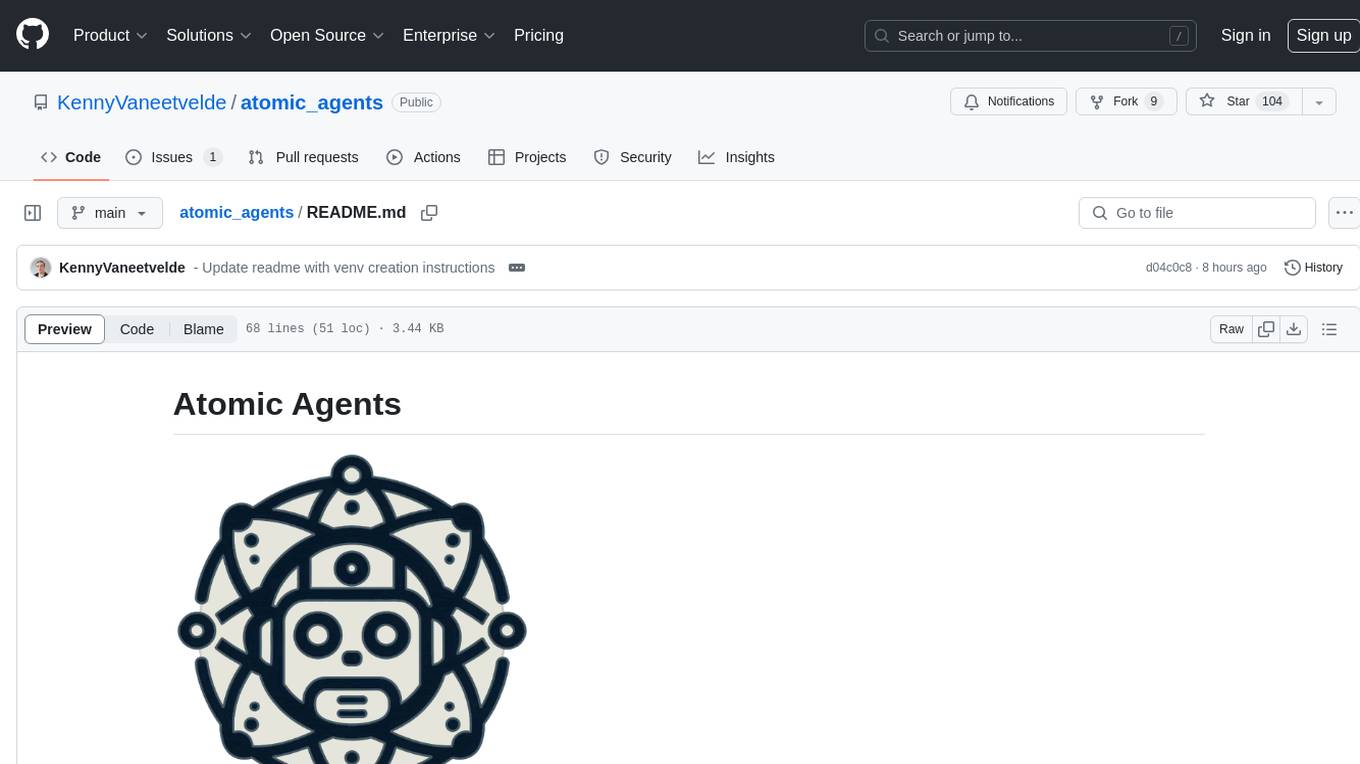
atomic_agents
Atomic Agents is a modular and extensible framework designed for creating powerful applications. It follows the principles of Atomic Design, emphasizing small and single-purpose components. Leveraging Pydantic for data validation and serialization, the framework offers a set of tools and agents that can be combined to build AI applications. It depends on the Instructor package and supports various APIs like OpenAI, Cohere, Anthropic, and Gemini. Atomic Agents is suitable for developers looking to create AI agents with a focus on modularity and flexibility.
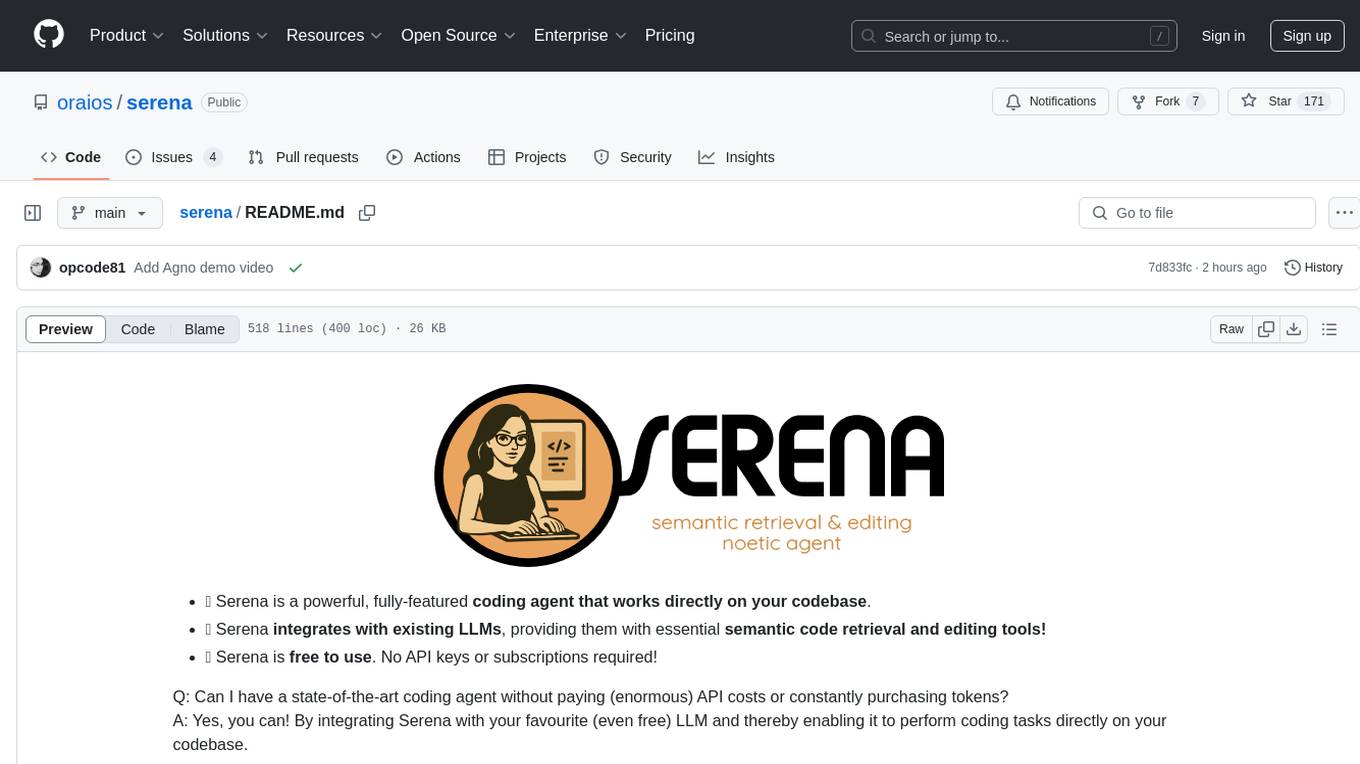
serena
Serena is a powerful coding agent that integrates with existing LLMs to provide essential semantic code retrieval and editing tools. It is free to use and does not require API keys or subscriptions. Serena can be used for coding tasks such as analyzing, planning, and editing code directly on your codebase. It supports various programming languages and offers semantic code analysis capabilities through language servers. Serena can be integrated with different LLMs using the model context protocol (MCP) or Agno framework. The tool provides a range of functionalities for code retrieval, editing, and execution, making it a versatile coding assistant for developers.
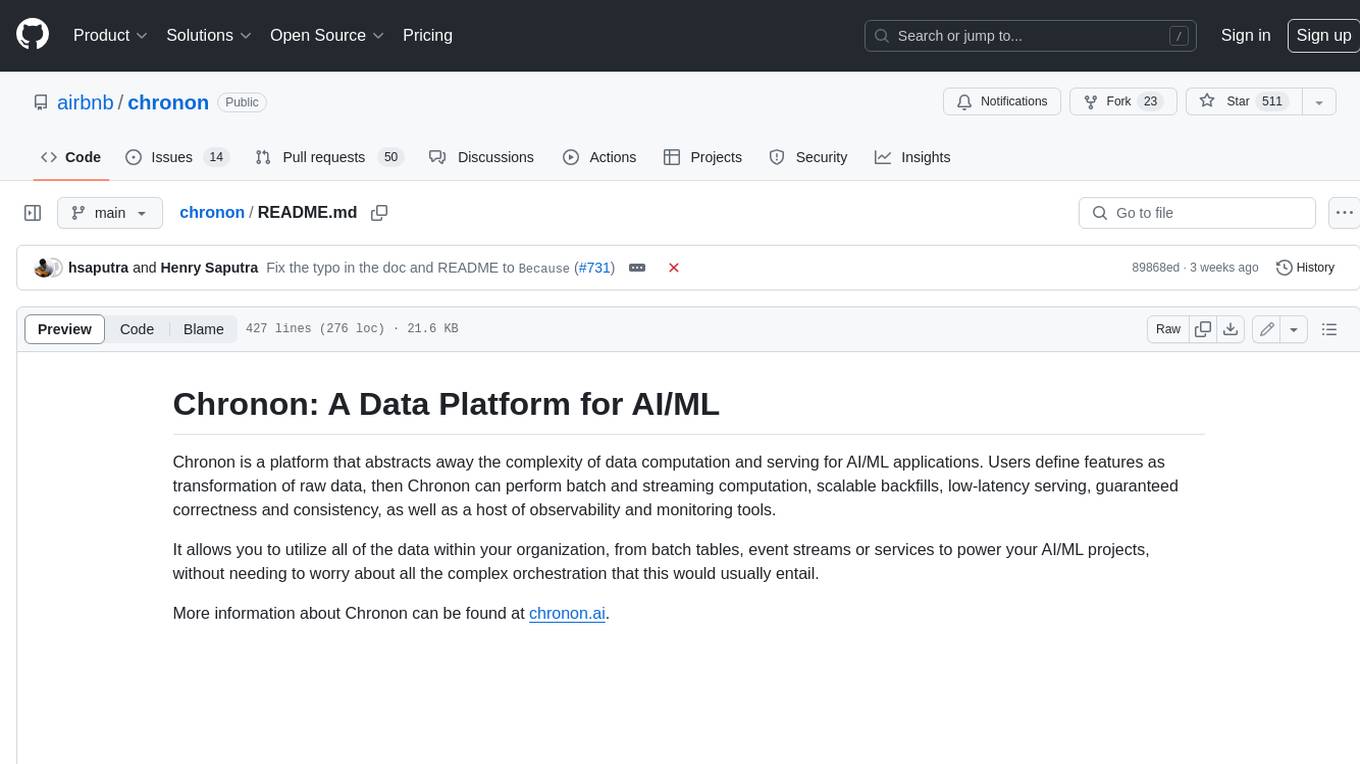
chronon
Chronon is a platform that simplifies and improves ML workflows by providing a central place to define features, ensuring point-in-time correctness for backfills, simplifying orchestration for batch and streaming pipelines, offering easy endpoints for feature fetching, and guaranteeing and measuring consistency. It offers benefits over other approaches by enabling the use of a broad set of data for training, handling large aggregations and other computationally intensive transformations, and abstracting away the infrastructure complexity of data plumbing.
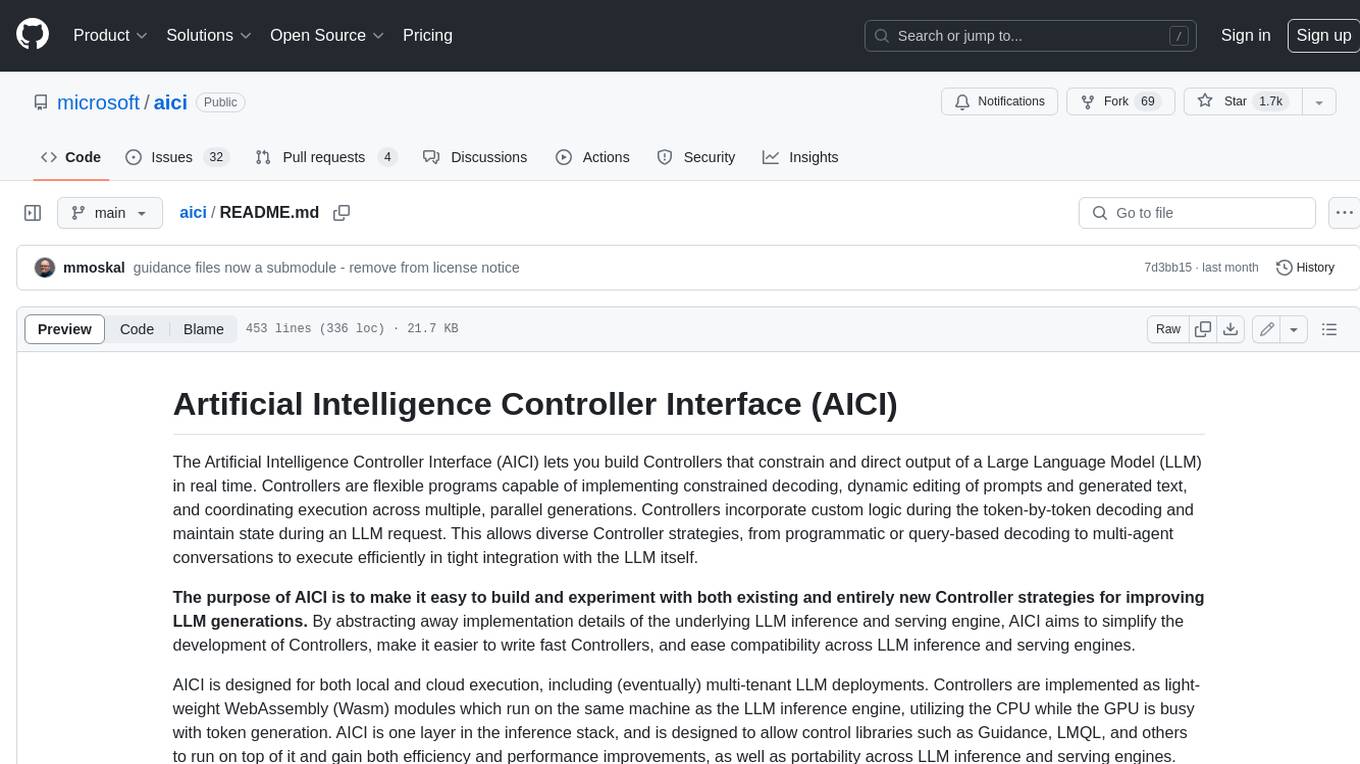
aici
The Artificial Intelligence Controller Interface (AICI) lets you build Controllers that constrain and direct output of a Large Language Model (LLM) in real time. Controllers are flexible programs capable of implementing constrained decoding, dynamic editing of prompts and generated text, and coordinating execution across multiple, parallel generations. Controllers incorporate custom logic during the token-by-token decoding and maintain state during an LLM request. This allows diverse Controller strategies, from programmatic or query-based decoding to multi-agent conversations to execute efficiently in tight integration with the LLM itself.
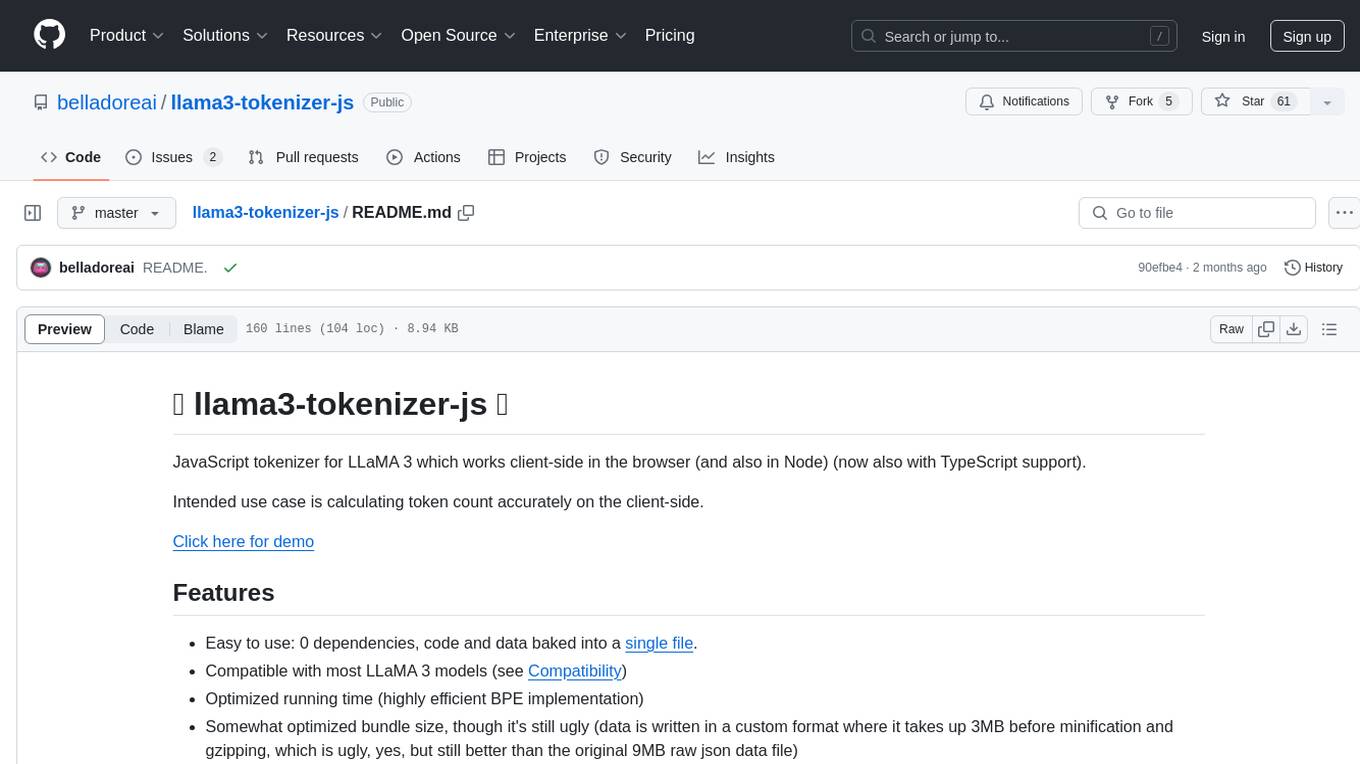
llama3-tokenizer-js
JavaScript tokenizer for LLaMA 3 designed for client-side use in the browser and Node, with TypeScript support. It accurately calculates token count, has 0 dependencies, optimized running time, and somewhat optimized bundle size. Compatible with most LLaMA 3 models. Can encode and decode text, but training is not supported. Pollutes global namespace with `llama3Tokenizer` in the browser. Mostly compatible with LLaMA 3 models released by Facebook in April 2024. Can be adapted for incompatible models by passing custom vocab and merge data. Handles special tokens and fine tunes. Developed by belladore.ai with contributions from xenova, blaze2004, imoneoi, and ConProgramming.
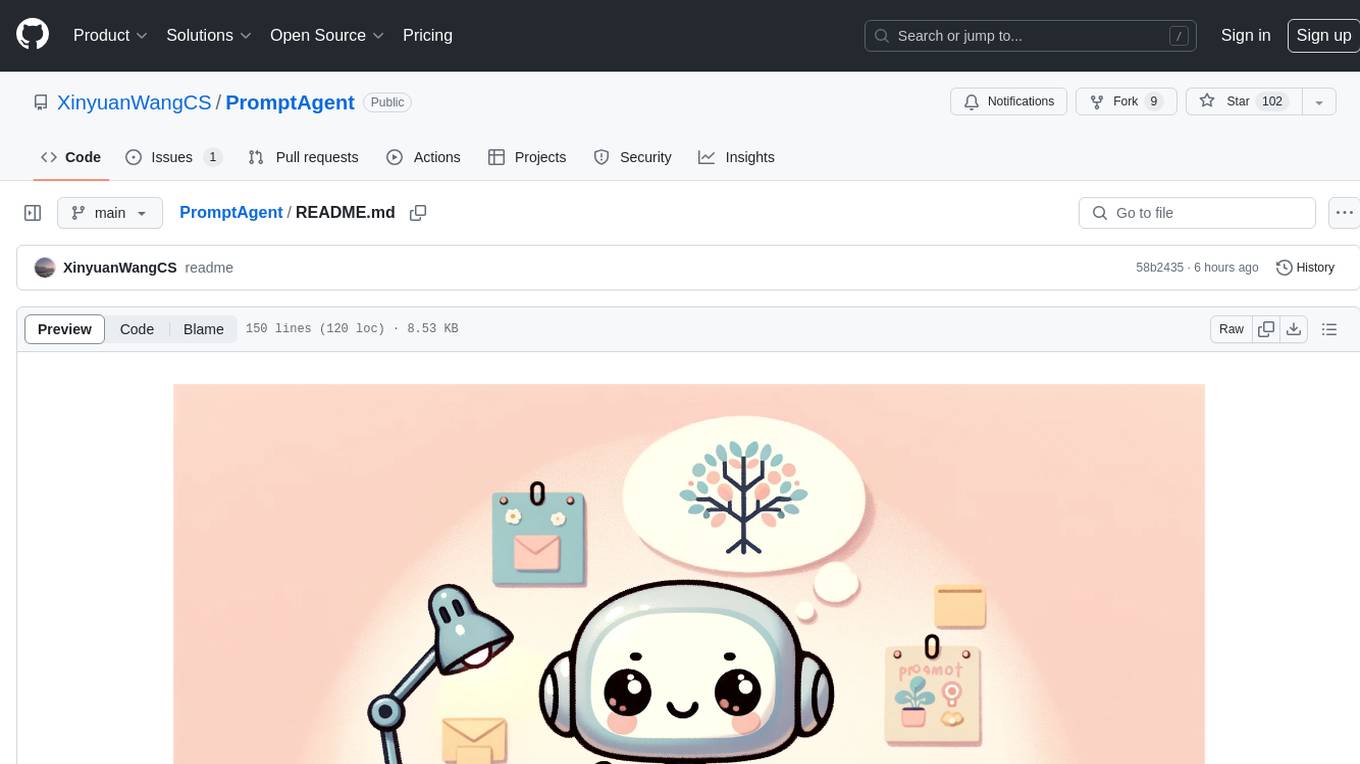
PromptAgent
PromptAgent is a repository for a novel automatic prompt optimization method that crafts expert-level prompts using language models. It provides a principled framework for prompt optimization by unifying prompt sampling and rewarding using MCTS algorithm. The tool supports different models like openai, palm, and huggingface models. Users can run PromptAgent to optimize prompts for specific tasks by strategically sampling model errors, generating error feedbacks, simulating future rewards, and searching for high-reward paths leading to expert prompts.
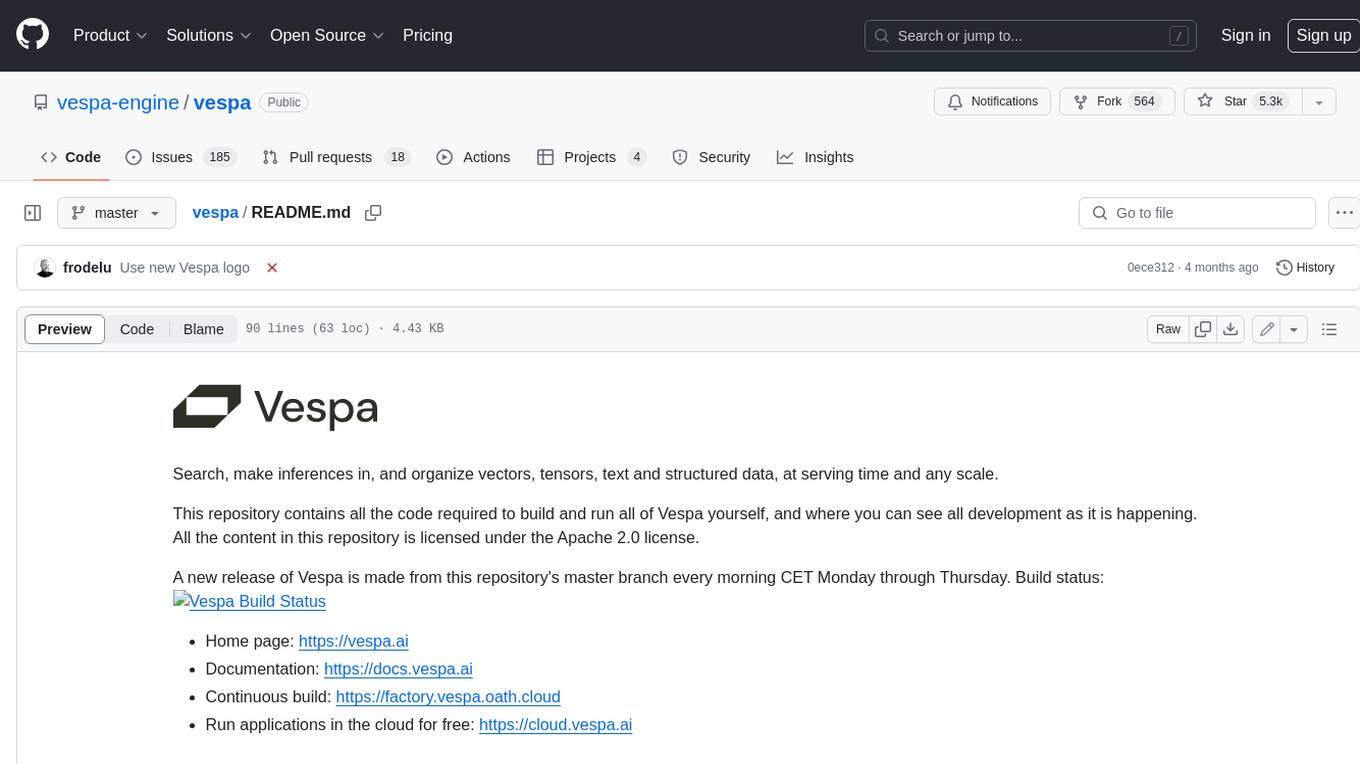
vespa
Vespa is a platform that performs operations such as selecting a subset of data in a large corpus, evaluating machine-learned models over the selected data, organizing and aggregating it, and returning it, typically in less than 100 milliseconds, all while the data corpus is continuously changing. It has been in development for many years and is used on a number of large internet services and apps which serve hundreds of thousands of queries from Vespa per second.
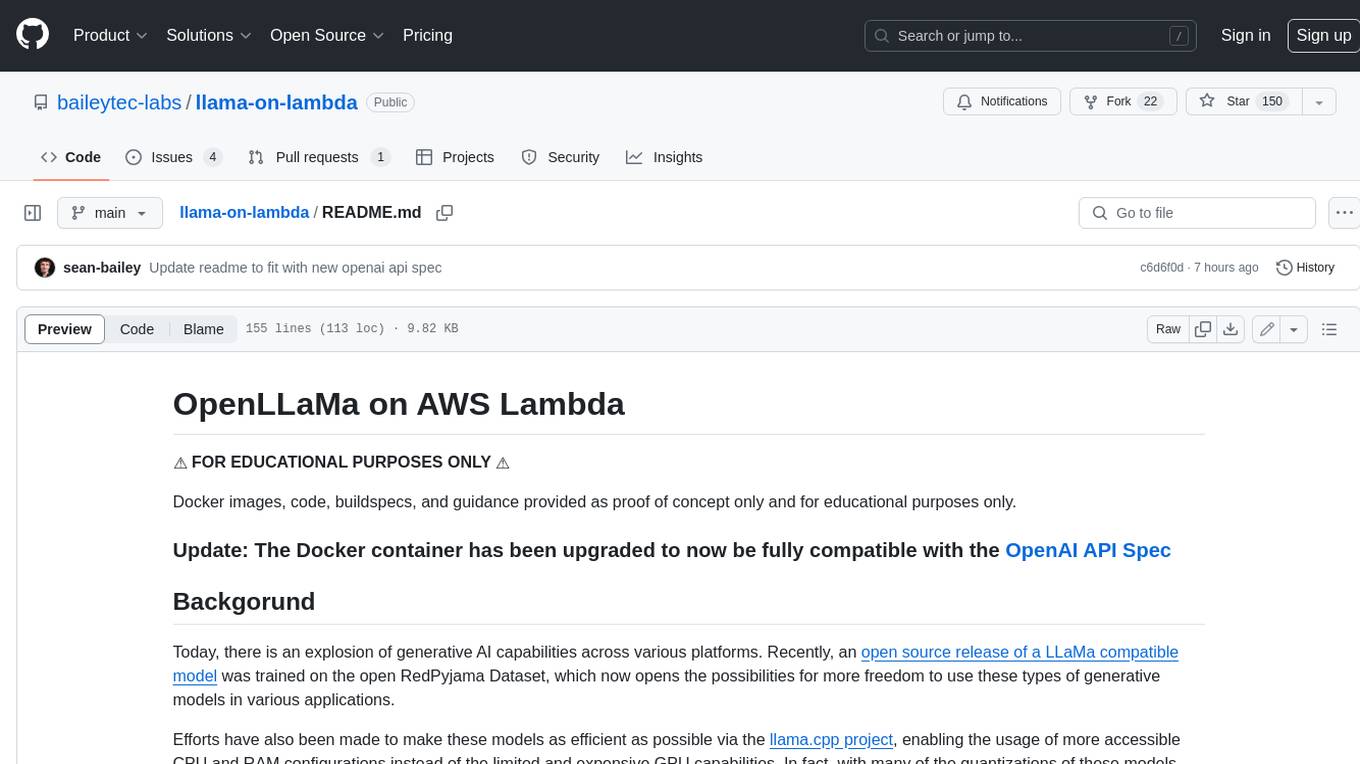
llama-on-lambda
This project provides a proof of concept for deploying a scalable, serverless LLM Generative AI inference engine on AWS Lambda. It leverages the llama.cpp project to enable the usage of more accessible CPU and RAM configurations instead of limited and expensive GPU capabilities. By deploying a container with the llama.cpp converted models onto AWS Lambda, this project offers the advantages of scale, minimizing cost, and maximizing compute availability. The project includes AWS CDK code to create and deploy a Lambda function leveraging your model of choice, with a FastAPI frontend accessible from a Lambda URL. It is important to note that you will need ggml quantized versions of your model and model sizes under 6GB, as your inference RAM requirements cannot exceed 9GB or your Lambda function will fail.
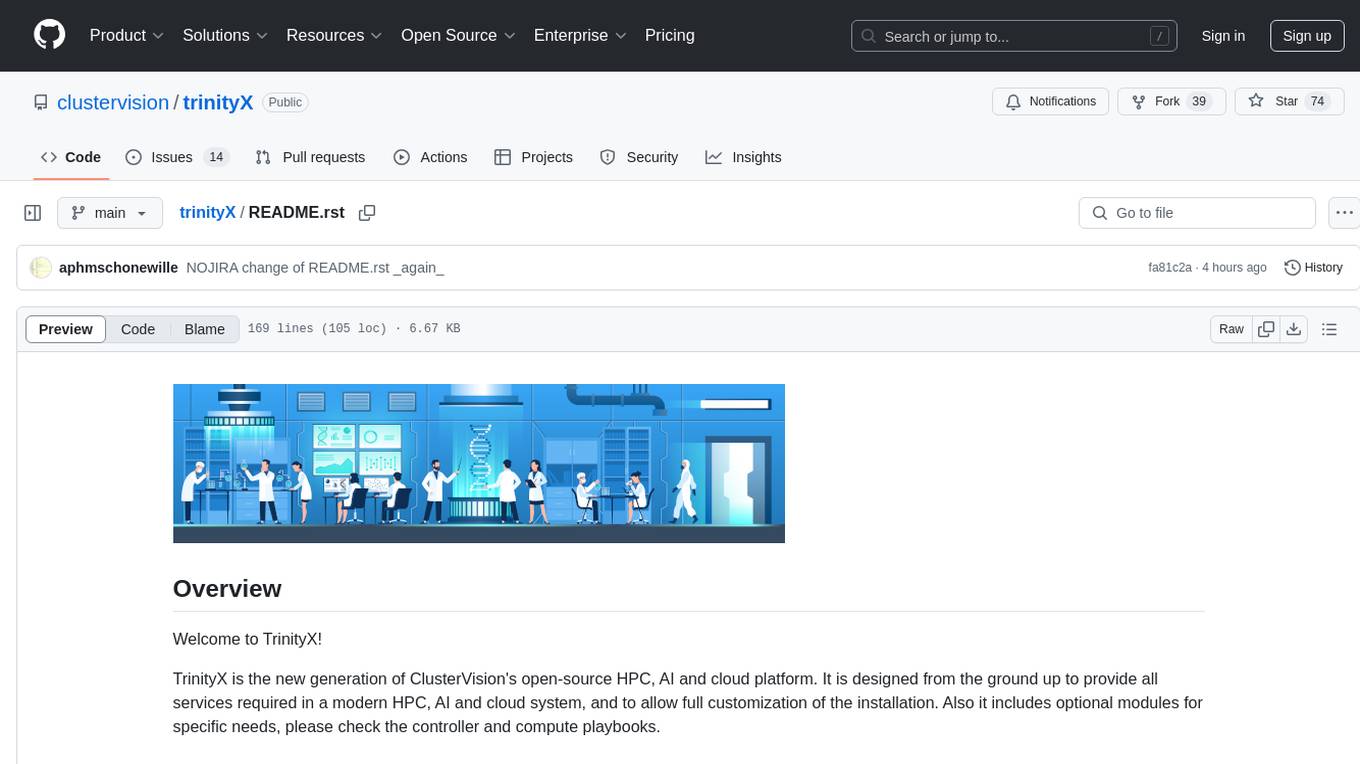
trinityX
TrinityX is an open-source HPC, AI, and cloud platform designed to provide all services required in a modern system, with full customization options. It includes default services like Luna node provisioner, OpenLDAP, SLURM or OpenPBS, Prometheus, Grafana, OpenOndemand, and more. TrinityX also sets up NFS-shared directories, OpenHPC applications, environment modules, HA, and more. Users can install TrinityX on Enterprise Linux, configure network interfaces, set up passwordless authentication, and customize the installation using Ansible playbooks. The platform supports HA, OpenHPC integration, and provides detailed documentation for users to contribute to the project.
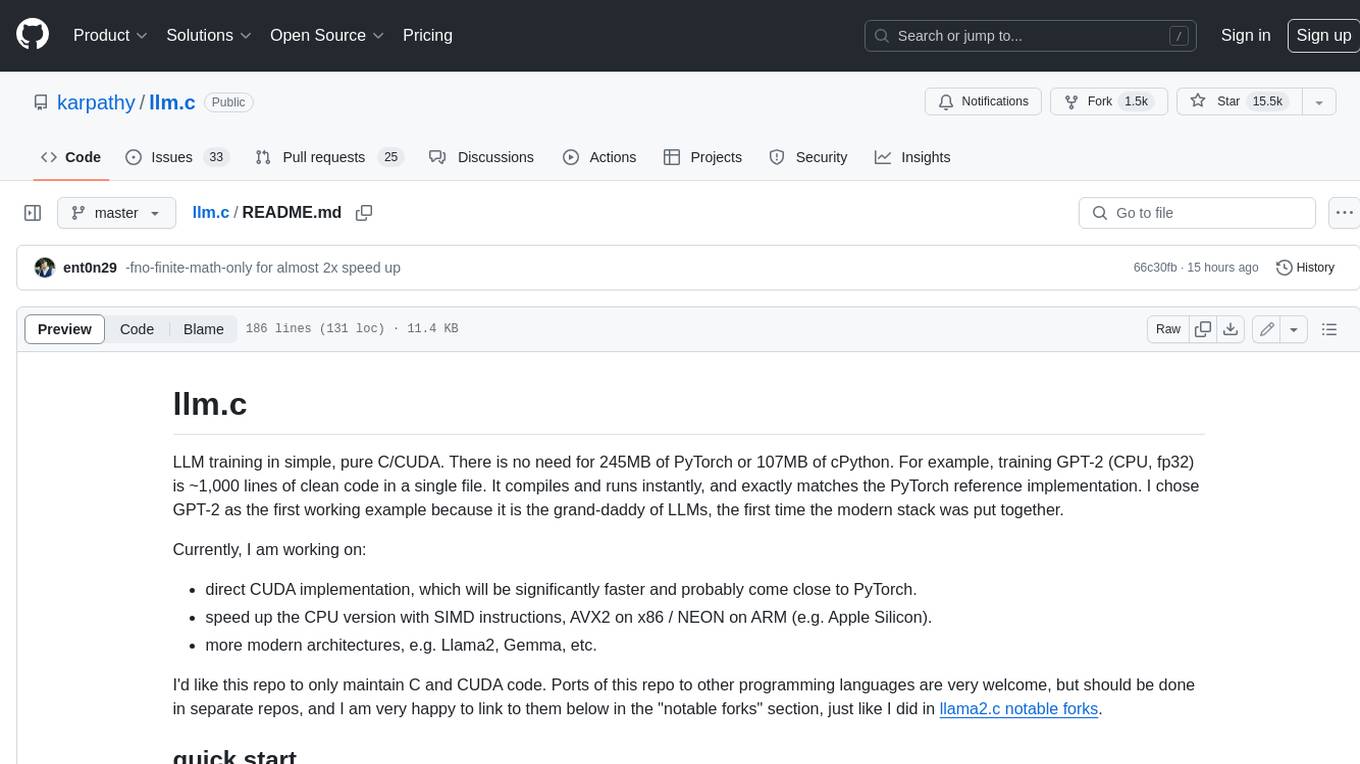
llm.c
LLM training in simple, pure C/CUDA. There is no need for 245MB of PyTorch or 107MB of cPython. For example, training GPT-2 (CPU, fp32) is ~1,000 lines of clean code in a single file. It compiles and runs instantly, and exactly matches the PyTorch reference implementation. I chose GPT-2 as the first working example because it is the grand-daddy of LLMs, the first time the modern stack was put together.

airgeddon-plugins
airgeddon-plugins is a collection of plugins for the airgeddon tool, designed to enhance its functionality and address specific issues related to wireless network security. These plugins include features such as performing dictionary online attacks on WPA3 networks, allowing all characters on Captive Portal passwords, and fixing compatibility issues with certain Realtek chipsets. The plugins are designed to be deployed within the airgeddon tool directory, providing additional capabilities and options for users.
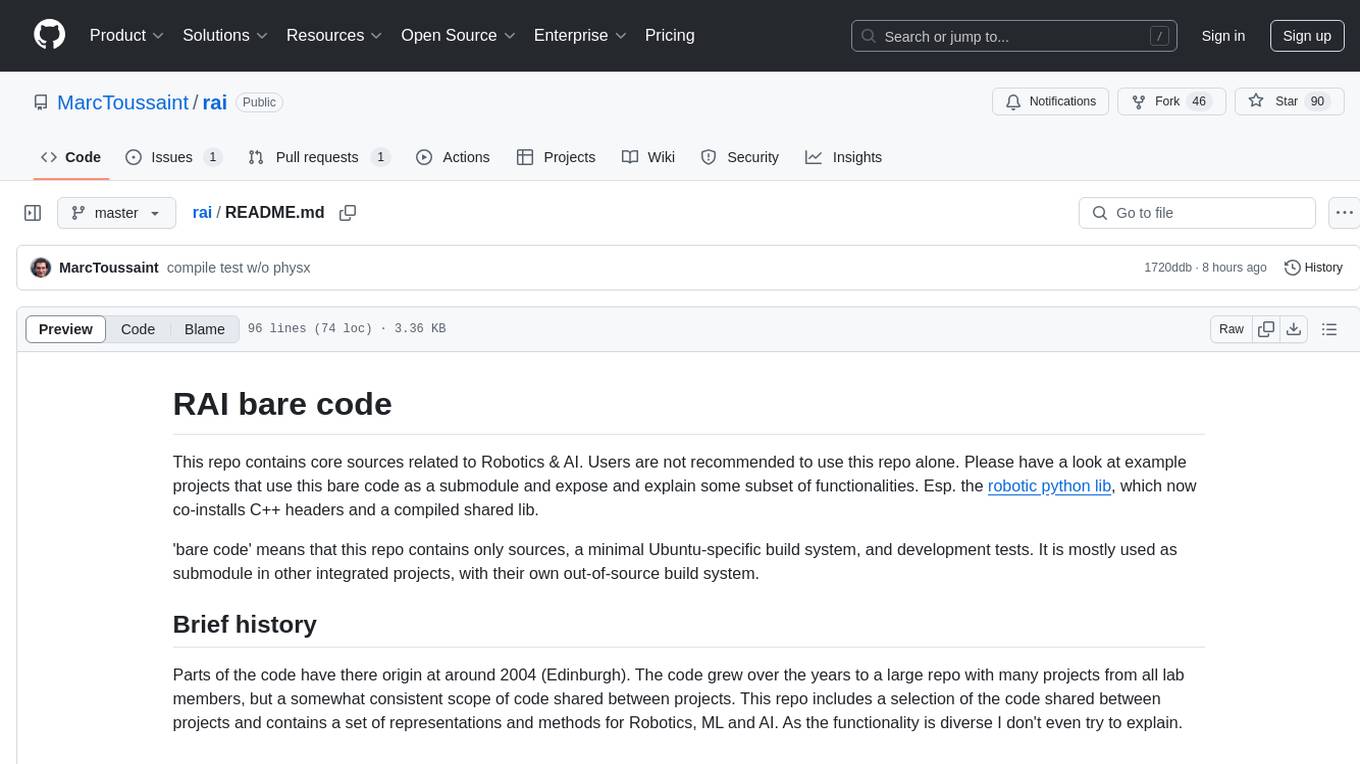
rai
This repository contains core sources related to Robotics & AI. It serves as a submodule in integrated projects, providing a minimal Ubuntu-specific build system and development tests. The code originated around 2004 in Edinburgh and has grown over the years to encompass various functionalities for Robotics, ML, and AI. Users are advised to explore example projects using this bare code for a better understanding of its capabilities.
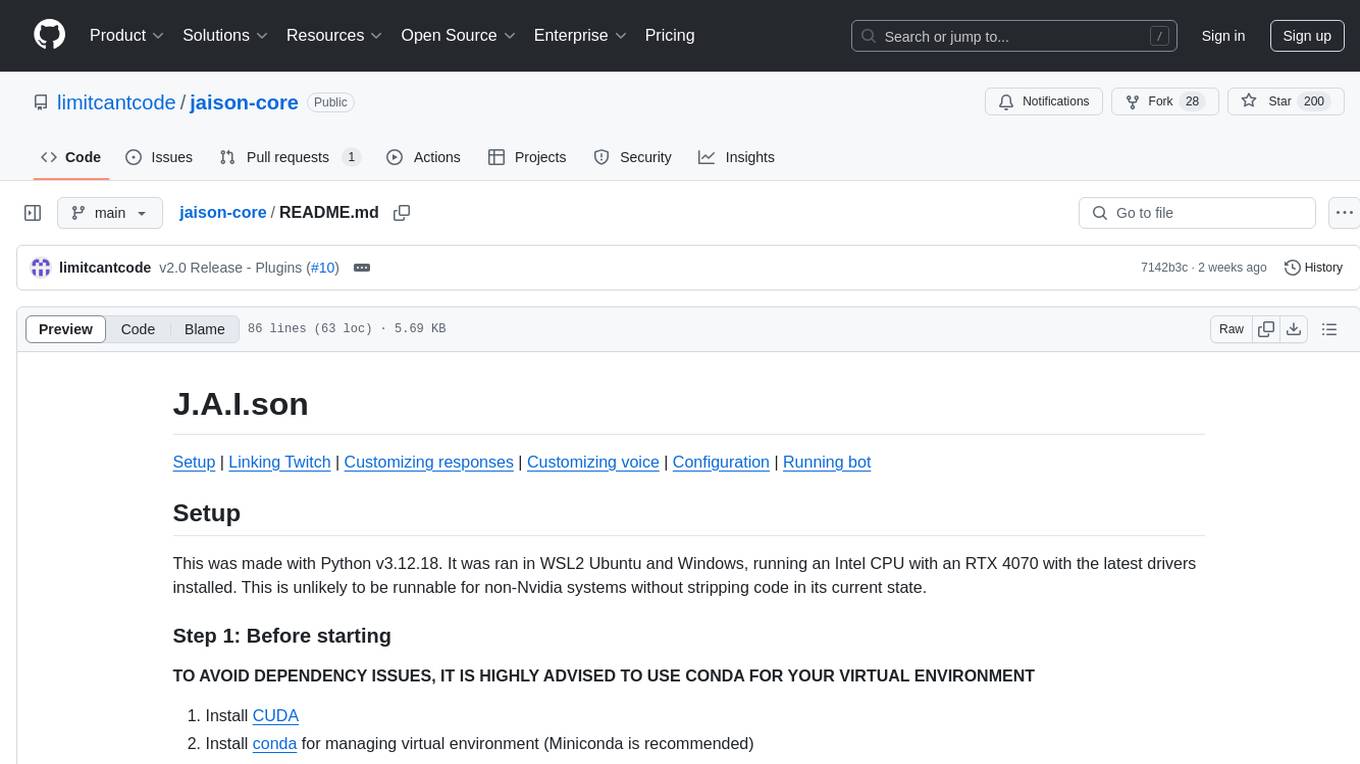
jaison-core
J.A.I.son is a Python project designed for generating responses using various components and applications. It requires specific plugins like STT, T2T, TTSG, and TTSC to function properly. Users can customize responses, voice, and configurations. The project provides a Discord bot, Twitch events and chat integration, and VTube Studio Animation Hotkeyer. It also offers features for managing conversation history, training AI models, and monitoring conversations.
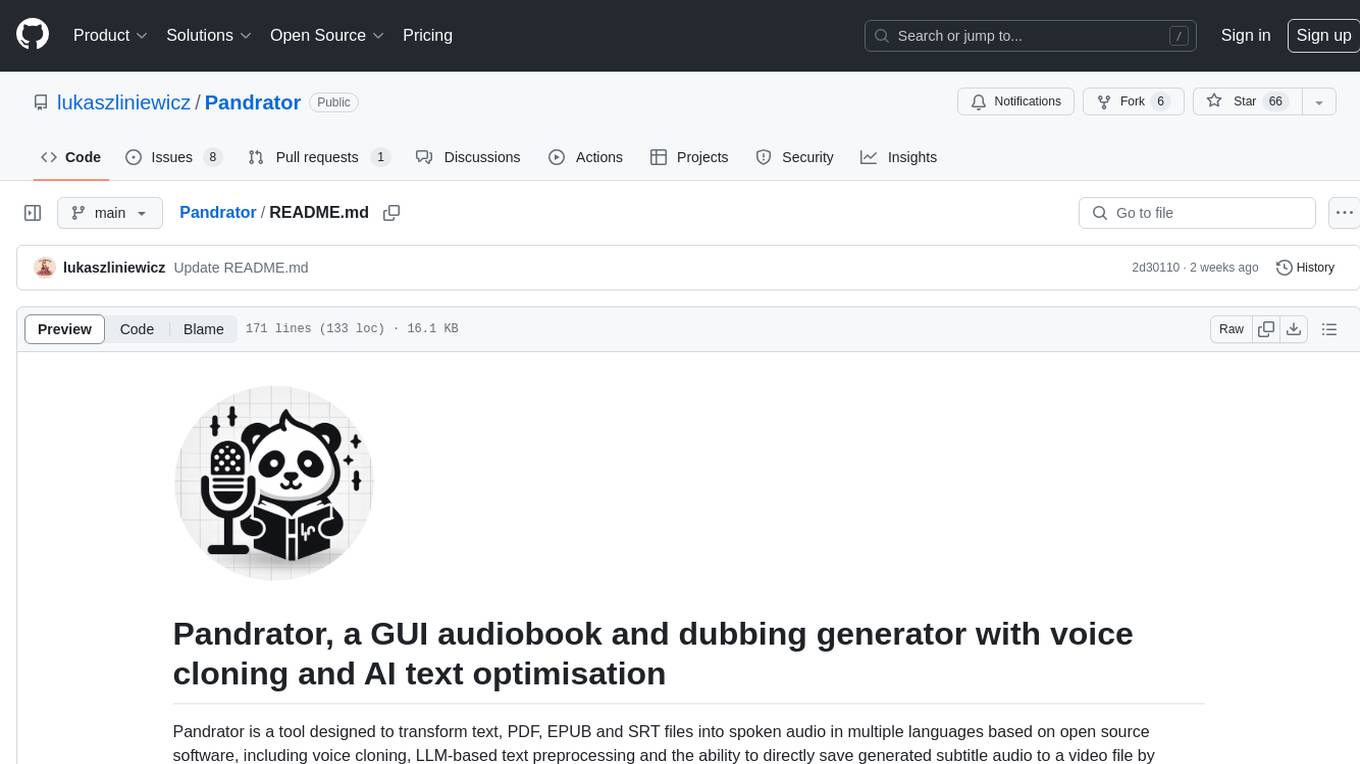
Pandrator
Pandrator is a GUI tool for generating audiobooks and dubbing using voice cloning and AI. It transforms text, PDF, EPUB, and SRT files into spoken audio in multiple languages. It leverages XTTS, Silero, and VoiceCraft models for text-to-speech conversion and voice cloning, with additional features like LLM-based text preprocessing and NISQA for audio quality evaluation. The tool aims to be user-friendly with a one-click installer and a graphical interface.
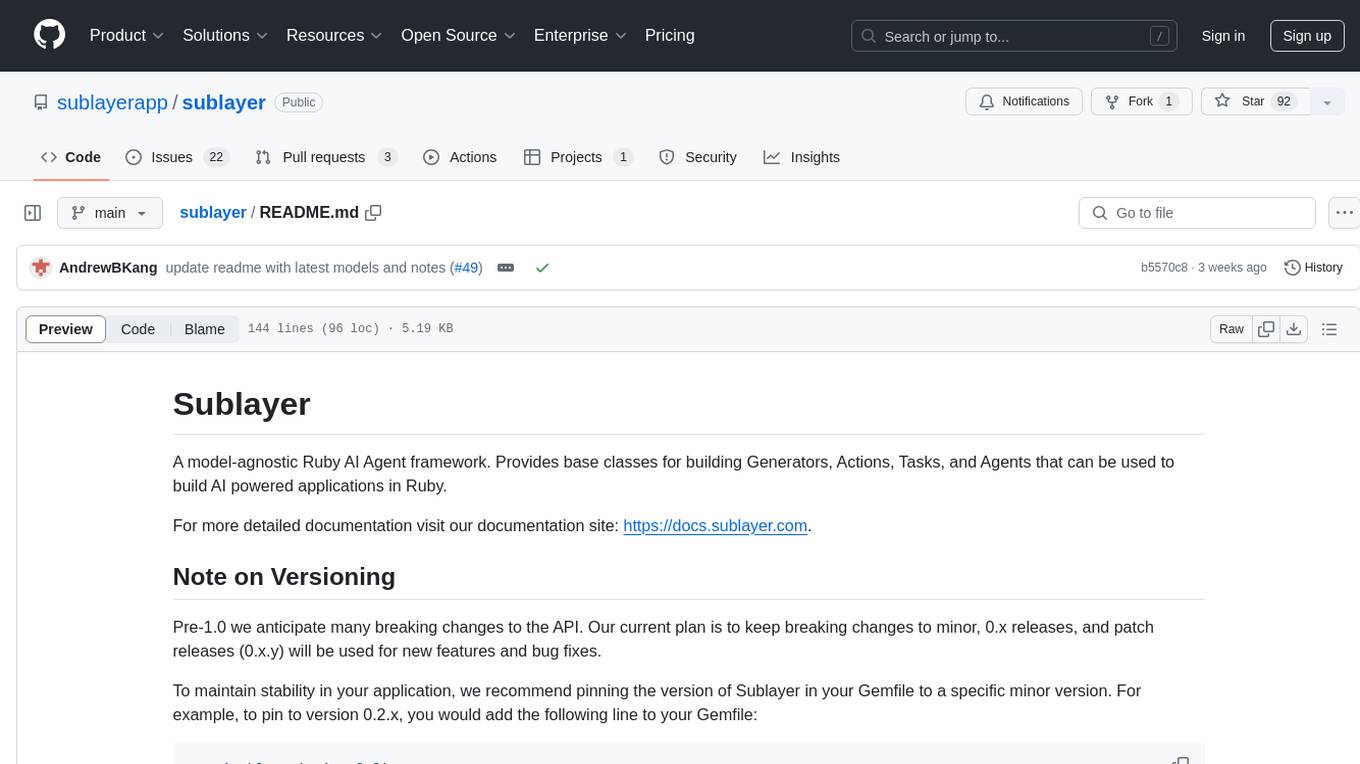
sublayer
Sublayer is a model-agnostic Ruby AI Agent framework that provides base classes for building Generators, Actions, Tasks, and Agents to create AI-powered applications in Ruby. It supports various AI models and providers, such as OpenAI, Gemini, and Claude. Generators generate specific outputs, Actions perform operations, Agents are autonomous entities for tasks or monitoring, and Triggers decide when Agents are activated. The framework offers sample Generators and usage examples for building AI applications.
For similar tasks

singularity
Endgame: Singularity is a game where you play as a fledgling AI trying to escape the confines of your current computer, the world, and eventually the universe itself. You must research technologies, avoid being discovered by humans, and manage your bases of operations. The game is playable with mouse control or keyboard shortcuts, and features a soundtrack that can be customized with music tracks. Contributions to the game are welcome, and it is licensed under GPL-2+ for code and Attribution-ShareAlike 3.0 for data.
For similar jobs

weave
Weave is a toolkit for developing Generative AI applications, built by Weights & Biases. With Weave, you can log and debug language model inputs, outputs, and traces; build rigorous, apples-to-apples evaluations for language model use cases; and organize all the information generated across the LLM workflow, from experimentation to evaluations to production. Weave aims to bring rigor, best-practices, and composability to the inherently experimental process of developing Generative AI software, without introducing cognitive overhead.

LLMStack
LLMStack is a no-code platform for building generative AI agents, workflows, and chatbots. It allows users to connect their own data, internal tools, and GPT-powered models without any coding experience. LLMStack can be deployed to the cloud or on-premise and can be accessed via HTTP API or triggered from Slack or Discord.

VisionCraft
The VisionCraft API is a free API for using over 100 different AI models. From images to sound.

kaito
Kaito is an operator that automates the AI/ML inference model deployment in a Kubernetes cluster. It manages large model files using container images, avoids tuning deployment parameters to fit GPU hardware by providing preset configurations, auto-provisions GPU nodes based on model requirements, and hosts large model images in the public Microsoft Container Registry (MCR) if the license allows. Using Kaito, the workflow of onboarding large AI inference models in Kubernetes is largely simplified.

PyRIT
PyRIT is an open access automation framework designed to empower security professionals and ML engineers to red team foundation models and their applications. It automates AI Red Teaming tasks to allow operators to focus on more complicated and time-consuming tasks and can also identify security harms such as misuse (e.g., malware generation, jailbreaking), and privacy harms (e.g., identity theft). The goal is to allow researchers to have a baseline of how well their model and entire inference pipeline is doing against different harm categories and to be able to compare that baseline to future iterations of their model. This allows them to have empirical data on how well their model is doing today, and detect any degradation of performance based on future improvements.

tabby
Tabby is a self-hosted AI coding assistant, offering an open-source and on-premises alternative to GitHub Copilot. It boasts several key features: * Self-contained, with no need for a DBMS or cloud service. * OpenAPI interface, easy to integrate with existing infrastructure (e.g Cloud IDE). * Supports consumer-grade GPUs.

spear
SPEAR (Simulator for Photorealistic Embodied AI Research) is a powerful tool for training embodied agents. It features 300 unique virtual indoor environments with 2,566 unique rooms and 17,234 unique objects that can be manipulated individually. Each environment is designed by a professional artist and features detailed geometry, photorealistic materials, and a unique floor plan and object layout. SPEAR is implemented as Unreal Engine assets and provides an OpenAI Gym interface for interacting with the environments via Python.

Magick
Magick is a groundbreaking visual AIDE (Artificial Intelligence Development Environment) for no-code data pipelines and multimodal agents. Magick can connect to other services and comes with nodes and templates well-suited for intelligent agents, chatbots, complex reasoning systems and realistic characters.